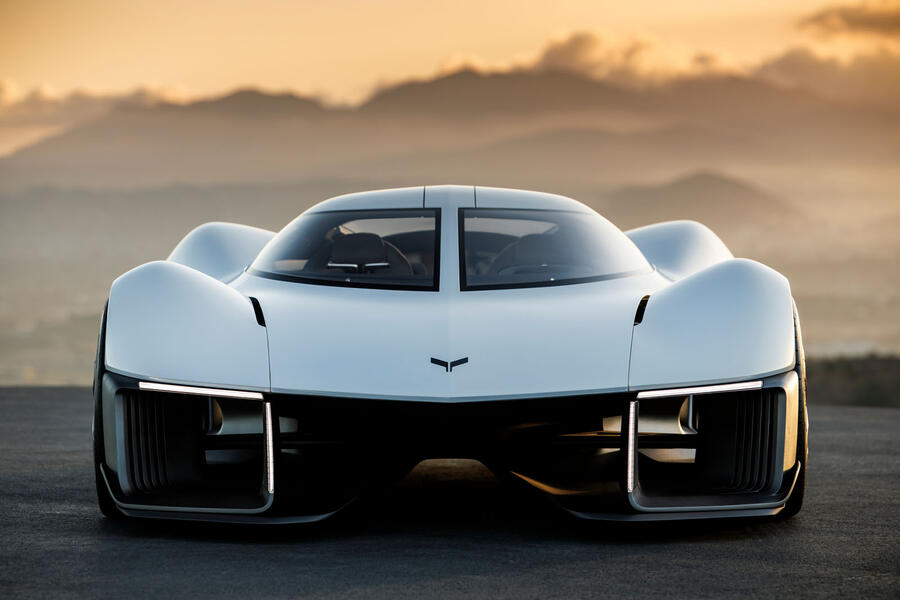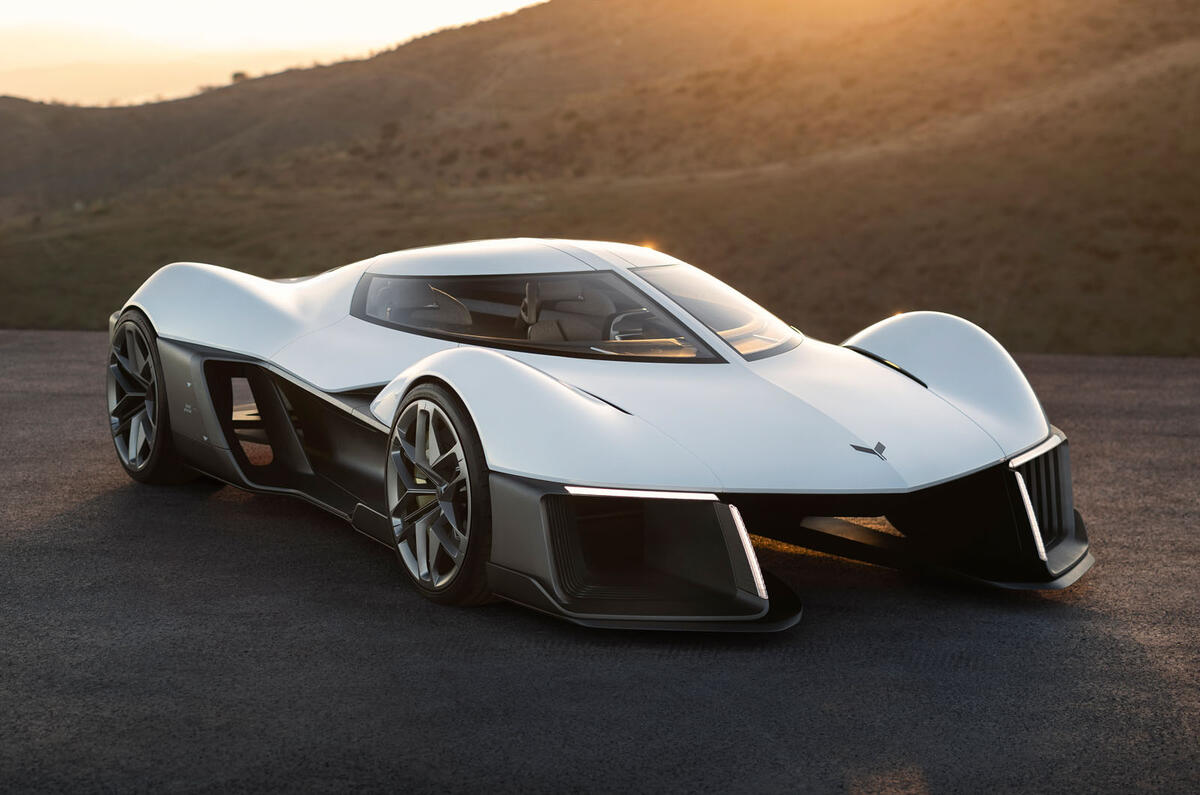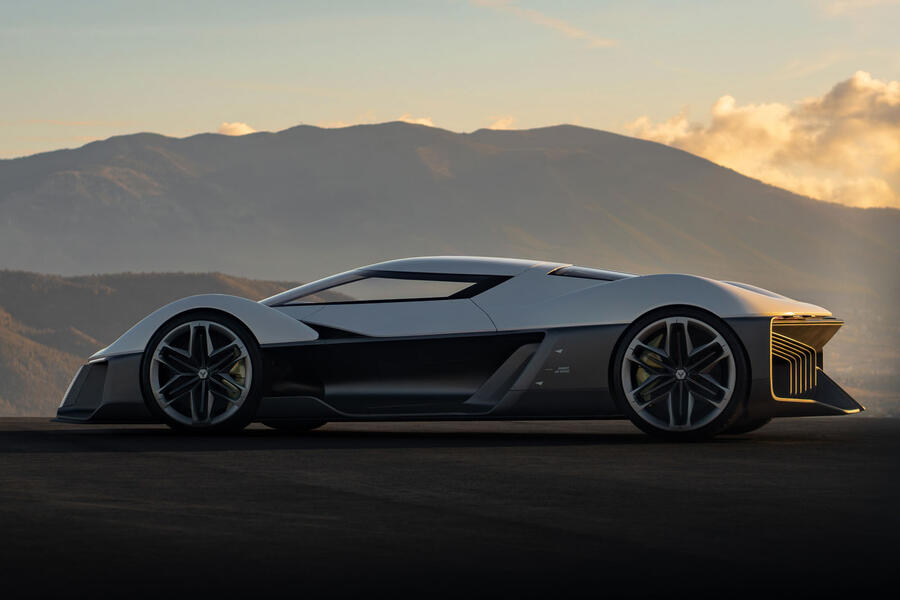General Motors has unveiled a fully finished, future-looking Chevrolet Corvette electric car concept produced entirely in Britain, to underscore the importance of its large and impressive new UK advanced design studio.
The recently opened studio in Leamington Spa is led by Julian Thomson, previously Jaguar’s head of design. Thomson has also worked for other manufacturers including Volkswagen and Lotus and was responsible for the creation of design icons such as the original Lotus Elise and the Range Rover Evoque.
The opening of a new design outpost comes as part of a push by GM to re-establish itself in Europe following a decade-long absence. GM-owned Cadillac’s new Lyriq EV is already available in certain markets in the region and the smaller, Europe-focused Optiq crossover is due to follow in the coming months – and both are due in the UK eventually.
The new Chevrolet concept is the first of three studies from GM studios to be shown this year as part of a global Corvette design project. The UK-designed concept is intended to contribute ideas and influence a single, final show car that will be unveiled in the second half of this year, possibly at the Goodwood Festival of Speed in July.
That design will then inform the development of a replacement for the current Corvette C8, expected around 2028, though at this stage GM isn’t confirming that the Corvette C9 will be a pure-electric car.
Company sources also say that while there is no production intent for the UK design – or the other two concepts, both from US studios – the new 30-strong British team was specially tasked with using its fresh perspective to “completely rethink the Corvette nameplate, pushing the boundaries of design and technology”.























Join the debate
Add your comment
The American car industry never seemed interested in selling cars in Europe and Great Britain, they never did a range of small or medium sized cars worth note,ok, the Chevy Matiz,even that wasn't a big volume seller, so why should we be forced into making our stuff cost more for us just to placate a person who thinks he's doing the right thing for his People?
What are you talking about.
Not many American brands sold in the UK, only a Mustang ,a few privately imported Camaro and Chargers,nothing in vast numbers,so, Chevrolet are designing a Vette in the UK, not much of a reason to, a car like this ( it has Valkyrie overtones about it) would sell in limited numbers, this would be a seven figure car looking as is, and I'd like it to look like forebears a bit,and if I'm being kind, it reminds me of Mercedes Avus from a few years ago.
There was some incoherent garble about being forced to make things cost more. What does that have to do with GM designing a 'Vette concept in their new English studio.
Even a concept car should have a full width windscreen, unless the driver have a 3D electronic front viewer
I believe it is American interest to have studios in various places outside the US, in the land of black, brown, snow white and yellow faces and feces.
Who the hell wants a Cadillac anyway? As if there aren't enough overpriced, overweight electric SUVs on the market as it is.